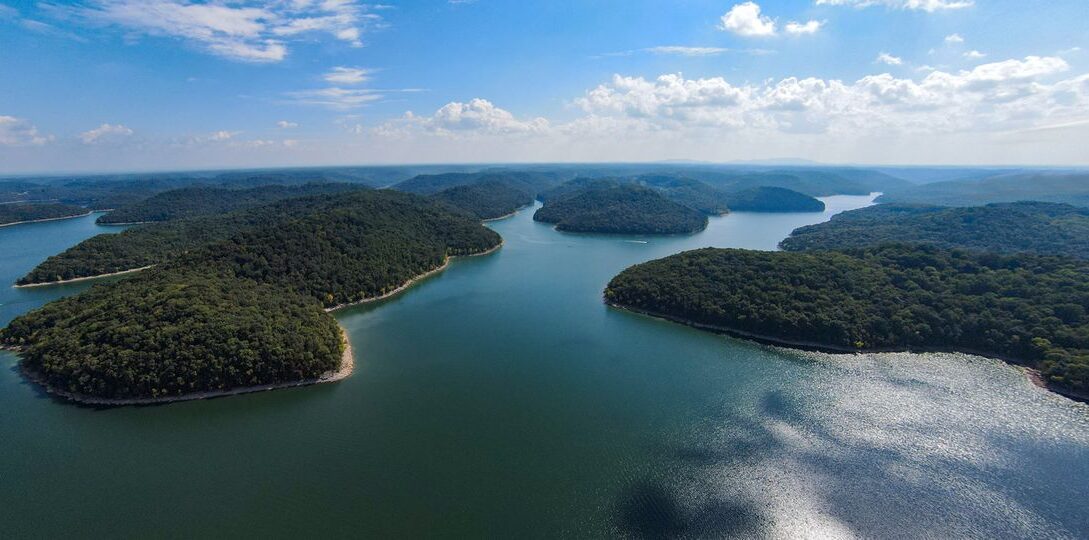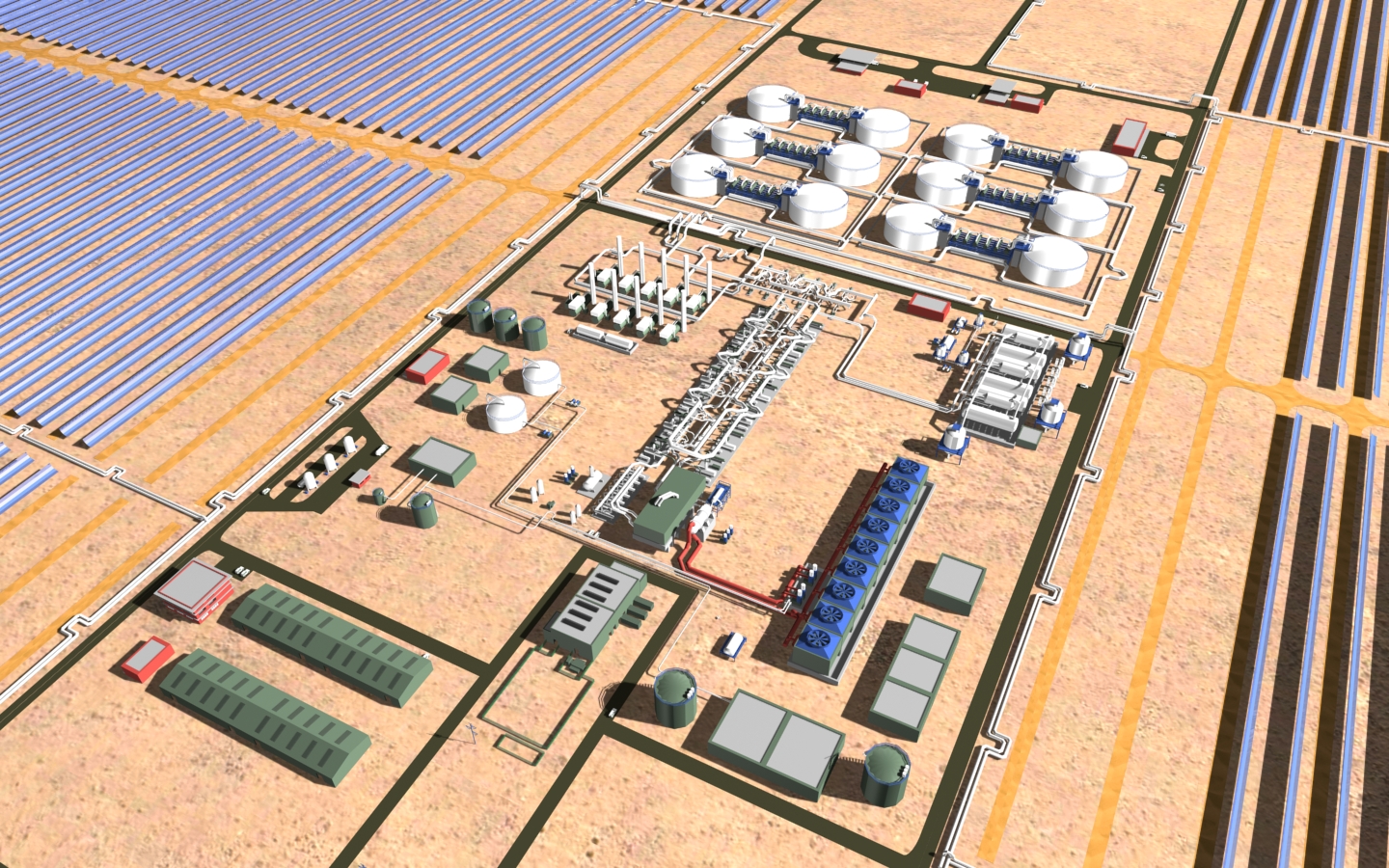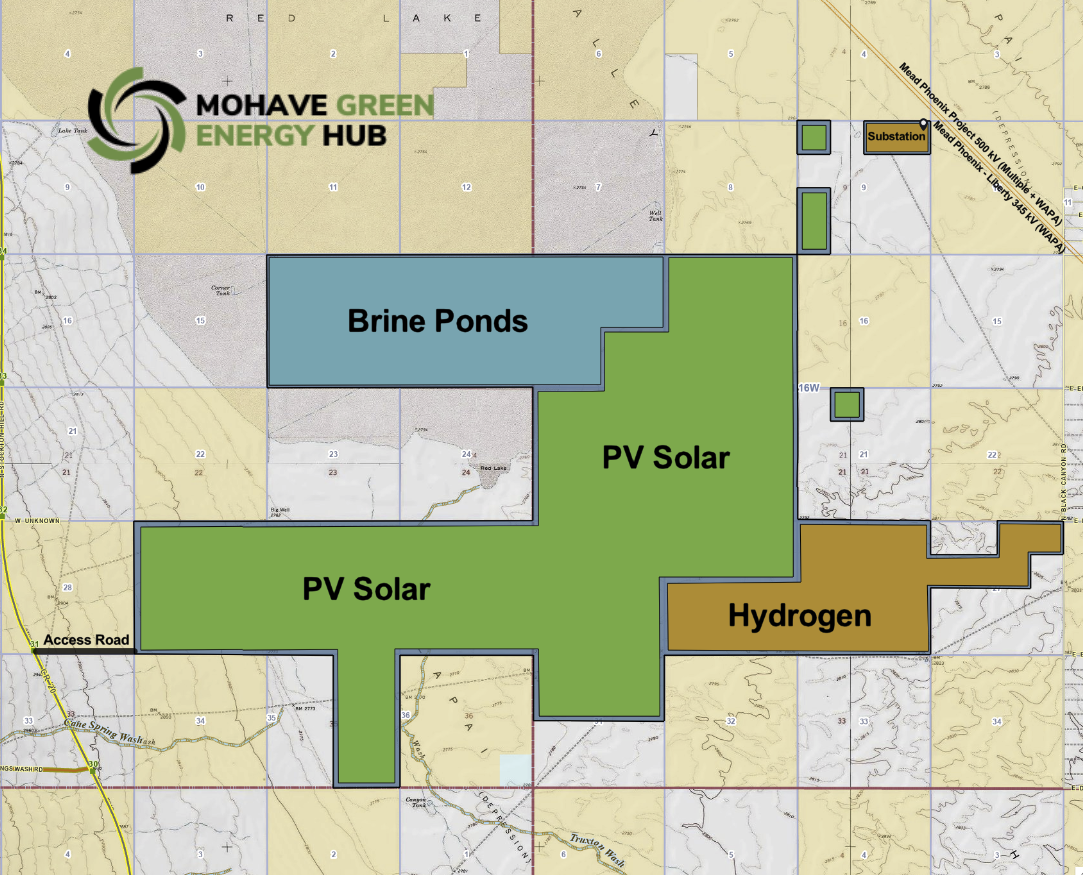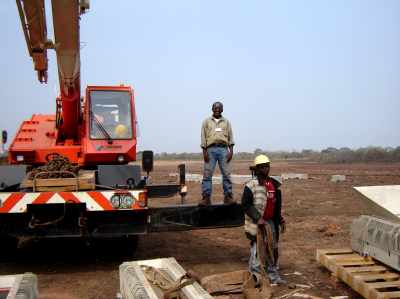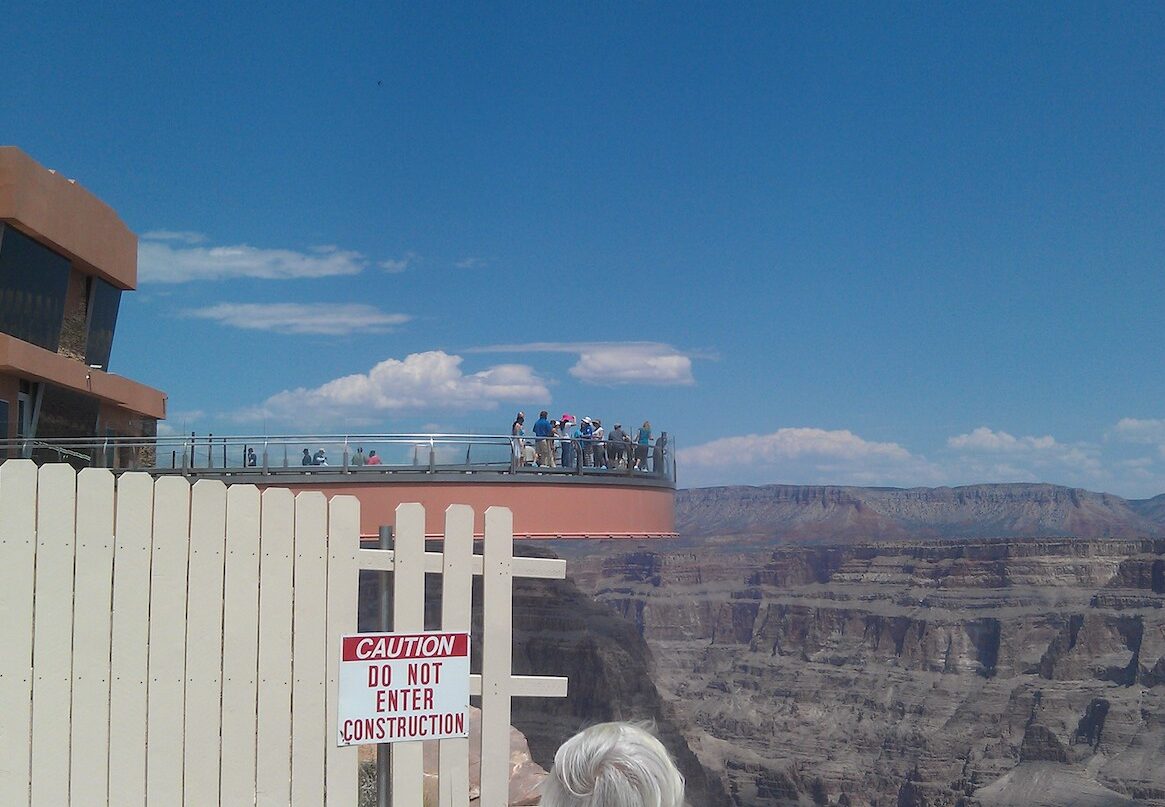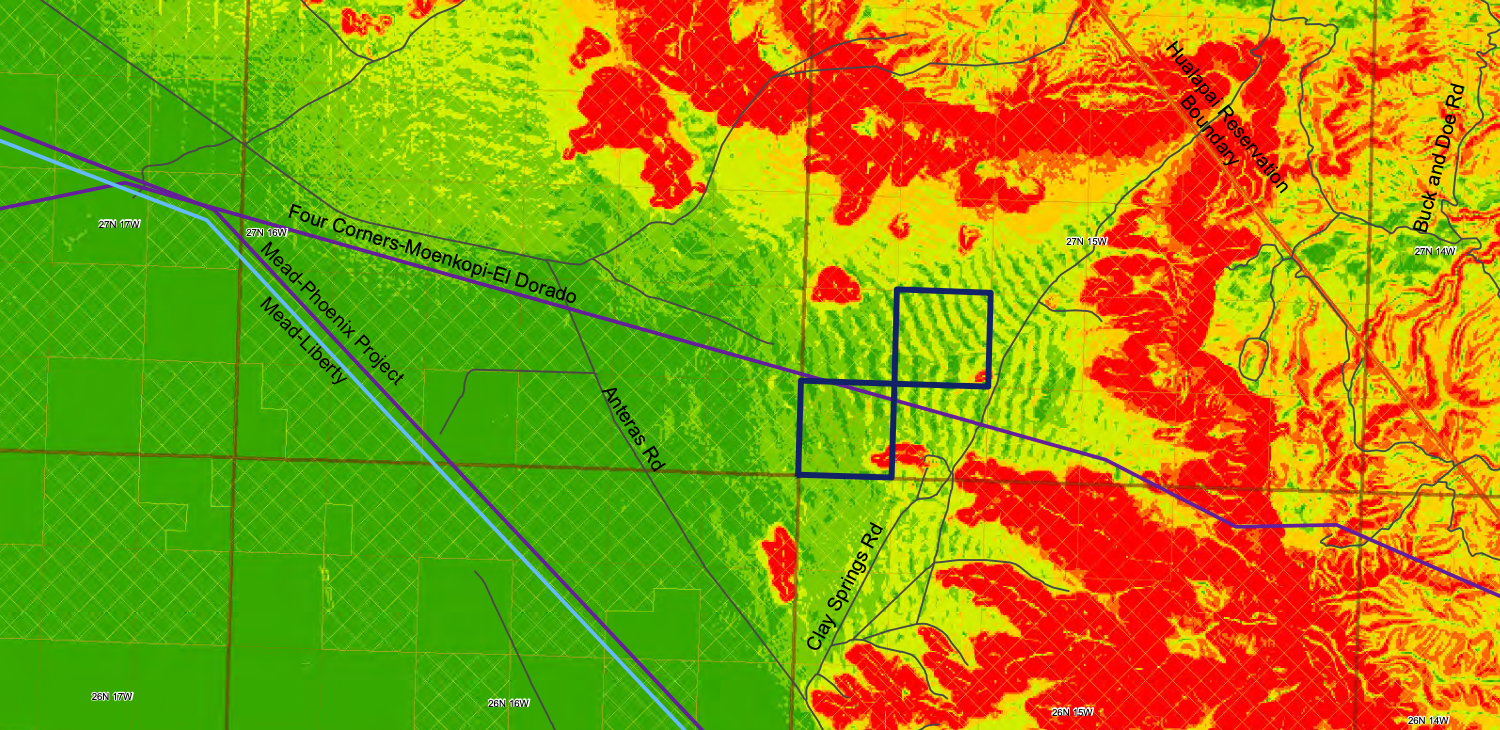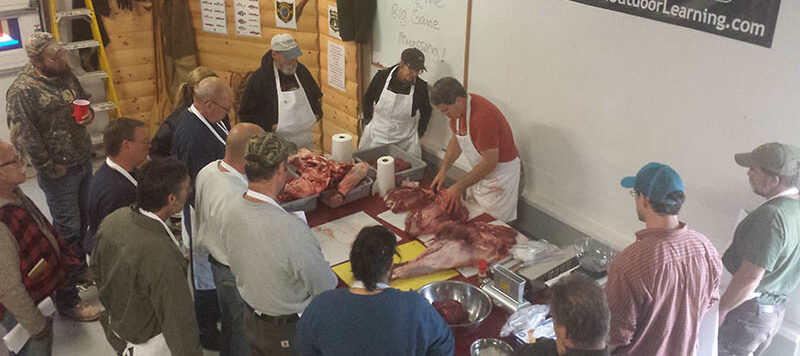Client: Mohave Sun Power / Location: Mohave County, Arizona / Services: greenfield development / The Hualapai Valley Solar Project was an ambitious renewable energy initiative first proposed in 2008. The project aimed to construct a 340 MW concentrating solar power (CSP) plant in Mohave County, Arizona, approximately 27 miles north of Kingman and 100 miles southeast of Las Vegas. Developed by Mohave Sun Power LLC, the facility was designed to utilize solar trough technology and feature 8 hours of thermal energy storage capacity, making it one of the largest solar power plants in the world at the time. One of READ MORE
Case Studies
Mohave Green Energy Hub
Client: Diversified Hydrogen / Location: Mohave County, Arizona / Services: greenfield development / The Mohave Green Energy Hub is an ambitious renewable energy project planned for development in Mohave County, Arizona, approximately 100 miles south of Las Vegas. Covering 8,760 acres of private land, with potential to expand to 20,000 acres, the project is located 25 miles north of Kingman, Arizona. It is designed as a multimodal renewable energy project, comprising solar power generation, clean hydrogen production, hydrogen storage, and distribution infrastructure. A key feature of the project is the planned 30,000 metric ton hydrogen salt cavern storage asset, which READ MORE
Sangaredi Refinery
Client: Global Alumina / Location: Republic of Guinea / Services: document control system / Global Alumina’s Sangaredi Refinery Project was a significant alumina production initiative proposed in Guinea, West Africa, in the early 2000s. The project aimed to construct a large-scale alumina refinery with an initial annual capacity of 3.3 million metric tons, expandable to 4.8 million metric tons. Located in the Sangaredi region of Guinea, the project was designed to take advantage of the Boké bauxite belt, one of the world’s most prolific bauxite regions. The project was initially developed by Global Alumina, which was founded in 1999. However, READ MORE
Grand Canyon West Solar
Client: Hualapai Tribal Nation / Location: Hualapai Reservation / Sevices: preliminary design / The Hualapai Tribe commissioned this study to evaluate options for developing a solar photovoltaic (PV) system at Grand Canyon West (GCW) to reduce reliance on diesel generators. The study examines current electricity usage, energy conservation measures, and two solar PV system options. GCW currently uses 15 diesel generators at 9 locations, consuming 240,430 gallons of fuel in 2011 to produce an estimated 2,671,000 kWh of electricity. The total cost, including fuel, capital, and maintenance, was $1.2 million or $0.46/kWh. The study recommends implementing energy conservation measures, including READ MORE
Clay Springs Wind & Solar
Client: Hualapai Tribal Nation / Location: Hualapai Reservation / Services: Tribal Energy Program wind & BIA solar study / The Hualapai Tribe, located in northern Arizona, began exploring renewable energy development opportunities on their reservation lands in the late 2000s. Around 2008-2009, the tribe received funding from the U.S. Department of Energy’s Tribal Energy Program to conduct resource and feasibility assessments for wind and solar projects. As part of these assessments, the tribe identified Clay Springs as one of the potential sites for renewable energy development. Clay Springs, along with other areas like Nelson, Grand Canyon West, Peach Springs, and READ MORE
Hualapai Meat & Game Processing Center
Client: Hualapai Tribal Nation / Location: Peach Springs / Services: RBOG feasibility study & business plan / The Hualapai Tribe is considering developing a meat and game processing facility to serve both tribal members and visitors. Currently, Hualapai ranchers have to transport their cattle long distances to be processed, while visitors to Grand Canyon West and the Hualapai Lodge consume large amounts of beef purchased from outside suppliers. The tribe has approximately 83 members who make their living from cattle ranching, raising over 2,000 head of cattle annually on the reservation. However, these ranchers currently have to transport their cattle READ MORE

